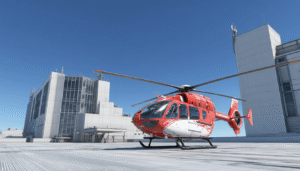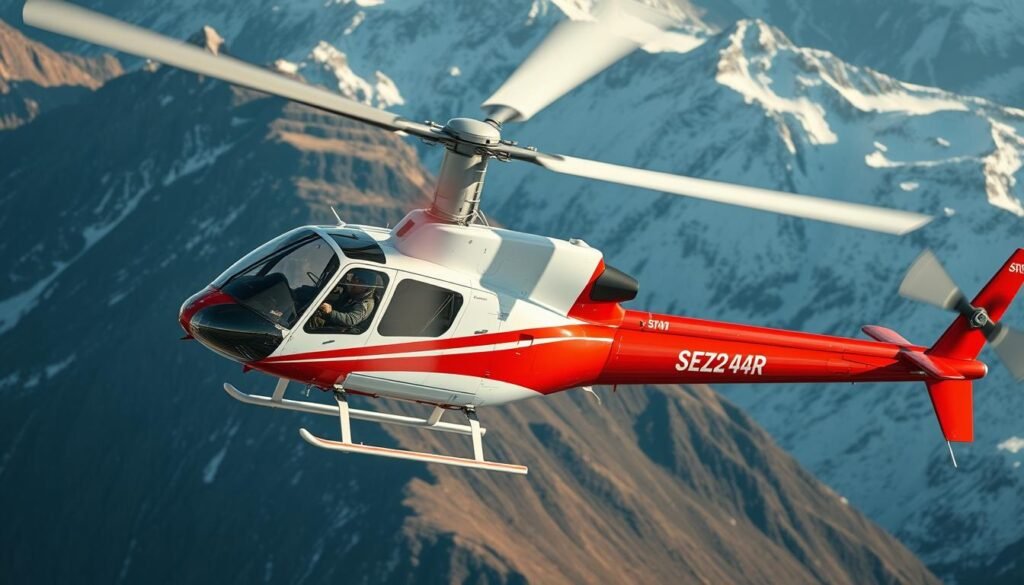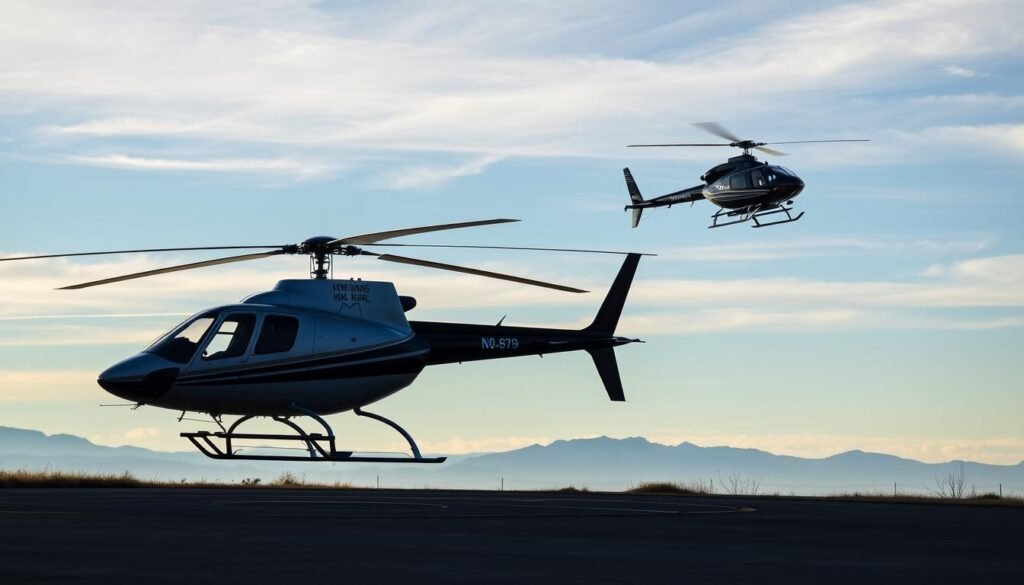Air Methods Helicopter Pilot Salary is examined here with clear, data-driven context. This introduction frames pay against U.S. averages and previews how a major EMS operator structures compensation. The piece cites a 2025 average of $75,178 and typical base bands of $71,000–$81,000, with total pay commonly between $69,000 and $85,000.
Readers will get a concise view of base pay, bonus ranges up to $10,000, and how operational factors move numbers. Research shows that mission profile, aircraft type, and location affect market worth and retention incentives.
The guide outlines the article flow: compensation levers, base ranges at a top provider, variable pay and incentives, benchmarks, experience steps, benefits, and negotiation tips. For benchmark context and broader pilot pay guidance, see a related resource on pilot pay benchmarks.
Key Takeaways
- Average U.S. base pay cited: $75,178 (2025 data).
- Typical base band runs $71k–$81k; total pay often spans $69k–$85k.
- Bonuses vary; reports show $0–$10k additions to base pay.
- Operational factors and local market worth can raise or lower offers.
- Use the employer’s website and title listings to verify current openings and stipends.
For a full breakdown of helicopter pilot roles across sectors, see our Helicopter Pilot Pay Guide.
Understanding Air Methods And EMS Pilot Compensation In The United States
Operational demands in medical flight programs shape how pay and schedules are built. This section outlines core tasks, mission profiles, and the staffing rules that drive compensation decisions for EMS crews at a major operator. To compare hourly, monthly, and annual pay formats across roles, visit Helicopter Pilot Salary Per Hour, Month, and Year.
How EMS Operations Shape Pilot Pay And Scheduling
Time-sensitive health transport missions require readiness, strict safety checks, and rapid coordination with hospitals and ground control. Those duties affect on-call rotations and differential pay.
- Mission focus: Transport and rescue work centers on patient outcome and speed, raising expectations for training and currency.
- Scheduling: High tempo and on-call shifts can trigger overtime, differentials, and location stipends.
- Job title and aircraft: Specific roles and assigned aircraft determine pay bands and required certifications.
- Experience and currency: Flight hours, EMS training, and instrument proficiency guide placement on the pay scale.
- Operational complexity: Night work, terrain, and weather increase risk and often come with higher compensation.
| Factor | How It Affects Compensation | Typical Impact |
|---|---|---|
| On-Call Rotations | Increases duty pay and overtime eligibility | Moderate to High |
| Aircraft Assignment | Higher-level aircraft may demand higher pay | Variable by level |
| Mission Profile | Medical transport and IFR work raise pay bands | High |
| Location & Conditions | Remote bases and harsh terrain yield stipends | Moderate |
The next section will convert these operational realities into concrete base ranges, bonus structures, and step scales used by the company to set pay in different ways across its network.
Air Methods Helicopter Pilot Salary: Base Pay, Bonuses, And Total Compensation
Here we quantify base pay, contrast reported bonuses, and show how extra pay elements shape annual totals at the company.
Base Salary Ranges And Recent Salary Report Figures
The company reports an average annual pay of $81,515 across roles, with a job-specific average for the helicopter role at $77,041. Reported salaries span from $57,209 to $113,396, giving clear expectations for entry and senior steps.
Variable Pay: Bonus, Overtime, And Stipend Considerations
National data shows a U.S. base average near $75,178, and bonuses typically range from $0 to $10,000. Overtime, call-out differentials, and location stipends can push total compensation above base at busy bases.
Sign-On Bonuses And Hiring Stipends At Air Methods
The employer often lists sign-on bonuses and hiring stipends in postings. Step A through Step D scales place new hires at defined starting points based on EMS experience. For current openings and pilot expectations, visit Air Methods’ careers page
“Candidates should read each posting closely to confirm exact base bands, sign-on amounts, and stipends for specific locations.”
| Metric | Company Figure | National Benchmark |
|---|---|---|
| Average Annual Pay | $81,515 | $75,178 (base avg) |
| Helicopter Role Avg | $77,041 | – |
| Pay Range | $57,209–$113,396 | $71,000–$81,000 (typical base band) |
| Bonuses / Extras | Sign-on, stipend, $0–$10,000 | $0–$10,000 |

What To Watch: The company’s Fair Pay score (2.21) and satisfaction (3.4/5) vary by base and mission. Use posted figures and recent report data to compare offers. For real-time salary benchmarks, visit Salary.com’s helicopter pilot data
Market Worth Benchmarks: How Air Methods Compares To Helicopter Pilot Averages
A direct comparison to U.S. averages clarifies whether a posted offer leads, matches, or trails the broader market.
Comparing Average Base Salary To National Helicopter Pilot Pay
Company data lists a helicopter pilot average of $77,041, slightly above the national median base salary of $75,178.
National base bands run $71,000–$81,000, and typical total pay sits near $69,000–$85,000.
Interpreting Salary Survey And Compensation Report Data
Research shows that sample size, report age, and role specificity change how one reads a salary report.
A company-wide range of $57,209–$113,396 stretches past national totals because senior roles and specialty missions push the top end.
- Use survey and posting data to find market worth by cross-referencing base salary, bonus bands, and local cost factors.
- Consider pilots’ hours, recency, and IFR or night experience—these often convert to higher pay.
- Call out when a posted offer falls below the median; that flags negotiation or further market checks.
“Compare base, variable components, and local market indicators to judge alignment with current pay trends.”
Experience And Step Scales: How Tenure And EMS Experience Affect Pay
Understanding step placement helps candidates predict initial offers and the likely timeline for raises tied to operational readiness.
Step A To Step D: Understanding Pay Progression
Step A through Step D place new hires by documented EMS experience and readiness level. Placement depends on tenure, recent flight hours, and relevant certifications. For licensing and EMS flight qualifications, see the FAA’s pilot certification guide.
Movement between steps usually follows training completion, performance milestones, and sustained flight proficiency in EMS operations. Mission complexity and base needs can speed advancement. Compare EMS pay to Tour & Charter, Instructor, and Firefighting & Rescue roles.
“Documented hours, checkride records, and leadership duties are the clearest evidence used when assigning a step level.”

Experienced Versus Late-Career Compensation Trends
National data shows experienced crews (10–19 years) averaged total compensation near $75,434, while late-career (20+ years) averaged $73,293.
Factors like local demand, specialty missions, and willingness to cover extra shifts can flatten or even reverse late-career pay declines.
| Factor | Effect On Pay | Typical Outcome |
|---|---|---|
| Step Placement | Based on EMS hours and credentials | Dictates starting base band |
| Mission Complexity | Night/IFR or high-risk ops increase eligibility for higher bands | Faster progression |
| Coverage & Overtime | Extra shifts and call-outs add differential pay | Higher total earnings |
| Leadership / Additional Duties | May merit higher step or stipends | Improved base and extras |
Practical tip: Keep training logs, recent EMS flight records, and checkride documents ready to validate step claims at offer time. Those records often change the initial level and immediate pay.
For pilots comparing offers and employers, a useful resource is a list of top hiring companies, which helps benchmark offers against market openings at competing firms: Top Companies Hiring Helicopter Pilots.
Beyond Salary: Benefits, Retention, And Safety-Driven Compensation Practices
Total rewards often combine base pay with benefits and incentives that shape real value for crew members in emergency transport programs. Candidates should read offers for all elements, not just the headline number. For EMS aviation trends and safety updates, visit Vertical Aviation International.

Safety commitments such as regular check rides, recurrent training, and formal safety management systems commonly link to differentials, stipends, and variable pay tied to extra shifts or hard-to-staff bases.
Retention tools include sign-on bonuses, hiring stipends, and stay incentives that stabilize coverage. National reports show bonus ranges of about $0–$10,000, while overtime and call-out pay add further upside.
- The company posts sign-on and step-based placement (A–D) to align experience with base and extras.
- Benefits — insurance, 401(k) match, paid time off, and training support — improve total rewards for employees in high-tempo flight work.
- Fair Pay indicators (score 2.21, satisfaction 3.4/5) are useful context when weighing culture, local leadership, and long-term retention.
“Review offer letters carefully to confirm base, variable pay, stipends, and safety-related incentives.”
For further context on retention planning and workforce studies, see this academic resource on retention and operations: retention research.
Finding Your Market Worth And Increasing Pay As A Helicopter Pilot
This section offers a step-by-step plan to determine current market value and raise pay using concrete evidence and targeted skills.

Job Title, Location, And Operations Type: Variables That Move Pay
Job title, base location, and operations type directly affect pay bands. Rural or high-risk bases tend to offer higher stipends.
Experience in IFR, NVG, or EMS work often translates to higher variable pay and faster step placement.
Negotiation Tips And Career Moves To Close The Pay Gap
Request posted ranges in writing and benchmark offers against a recent salary report.
- Document flight hours, checkrides, and training to support higher placement.
- Negotiate sign-on, stipends, and clear variable pay language at the offer stage.
- Consider employer changes, relocation, or added duties to increase total pay.
For provider-specific benchmarks, explore Bristow Helicopters Salary Breakdown and US Coast Guard Helicopter Pilot Salary.
Addressing The Gender Pay Gap With Data-Driven Approaches
To reduce the gender pay gap, use comparable job title benchmarks, insist on structured pay bands, and cite survey medians when asking for adjustments.
“Use verified market tools and documented contributions to make a factual case for higher pay.”
| Action | Why It Helps | Expected Outcome |
|---|---|---|
| Earn IFR / NVG | Increases mission capability | Higher variable pay eligibility |
| Benchmark With Survey Data | Provides objective market worth | Stronger negotiation leverage |
| Take Safety/Training Role | Adds leadership value | Faster step progression or stipends |
Final Thoughts
This conclusion distills key findings and steps pilots should take when assessing offers from air methods corporation and related organizations.
The corporation’s average annual pay sits at $81,515, with a reported helicopter pilot average of $77,041. That compares to a national median base of $75,178 per year and typical base bands near $71,000–$81,000.
Candidates must evaluate total rewards: base, bonuses, sign-on, stipends, and benefits. Step A–D placement and documented experience often change initial placement and future growth.
Whether you’re flying life-saving missions or transitioning into turbine roles, understanding how employer type, location, and career stage shape pay is key. For a full salary roadmap, revisit our Helicopter Pilot Pay Guide.



